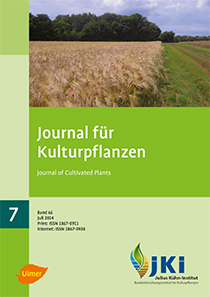Detection and molecular analysis of <em>Hop latent virus</em> and <em>Hop latent viroid</em> in hop samples from Poland
Keywords:
Hop latent virus, hop latent viroid, hop stunt viroid, RT-PCR, real time RT-PCR, ELISAAbstract
Monitoring the occurrence of virus diseases in plants is important for the implementation of early control measures and prevention of further disease spread. In Poland, in 2004 a health programme for hop was started to eliminate viruses and viroids. In 2012/13, in vitro plants, samples from the IUNG-PIB experimental station and commercial hop gardens in Poland were tested for Hop latent virus (HpLV), and Hop latent and Hop stunt viroids (HpLVd and HpSVd). For virus testing, RT-PCR and ELISA methods were used. In order to detect hop viroids, RT-PCR was employed. The overall incidence of HpLV and hop viroids was lower than reported before the start of the programme. Cloning and sequencing revealed that the HpLV and the HpLVd from Polish sources are very similar to the type sequences and the Czech sources.
DOI: 10.5073/JfK.2014.07.04, https://doi.org/10.5073/JfK.2014.07.04
Published
Issue
Section
License
The content of the journal is licensed under the Creative Commons Attribution 4.0 License. Any user is free to share and adapt (remix, transform, build upon) the content as long as the original publication is attributed (authors, title, year, journal, issue, pages).
The copyright of the published work remains with the authors. The authors grant the Journal of Cultivated Plants, the Julius Kühn-Institut and the OpenAgrar repository the non-exclusive right to distribute and exploit the work.







